Working with a hybrid cloud: VMware vCloud Connector, part 2
- Tutorial
Working with a hybrid cloud: VMware vCloud Connector, Part 1
Working with a hybrid cloud: replication and disaster recovery to a service provider cloud using Veeam Cloud Connect Replication
In the first part, we talked about how to deploy vCloud Connector - a tool for working with a hybrid cloud based on VMware. Today we will go over the main functionality of vCloud Connector. We show how to work with virtual machines located in different infrastructures (turning on, turning off, access to the console), move virtual machines between remote infrastructures and synchronize directories.
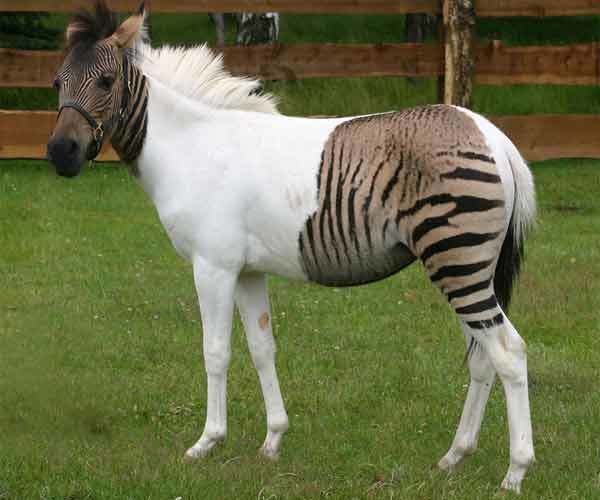
On / off. Everything is simple here. Go to the vCloud Connector interface.
In the left menu, select the infrastructure. In the right pane, go to the Virtual Machines tab and select the desired virtual machine. We click on the Power On control panel if we want to turn on the machine, Power Off if we want to turn it off.
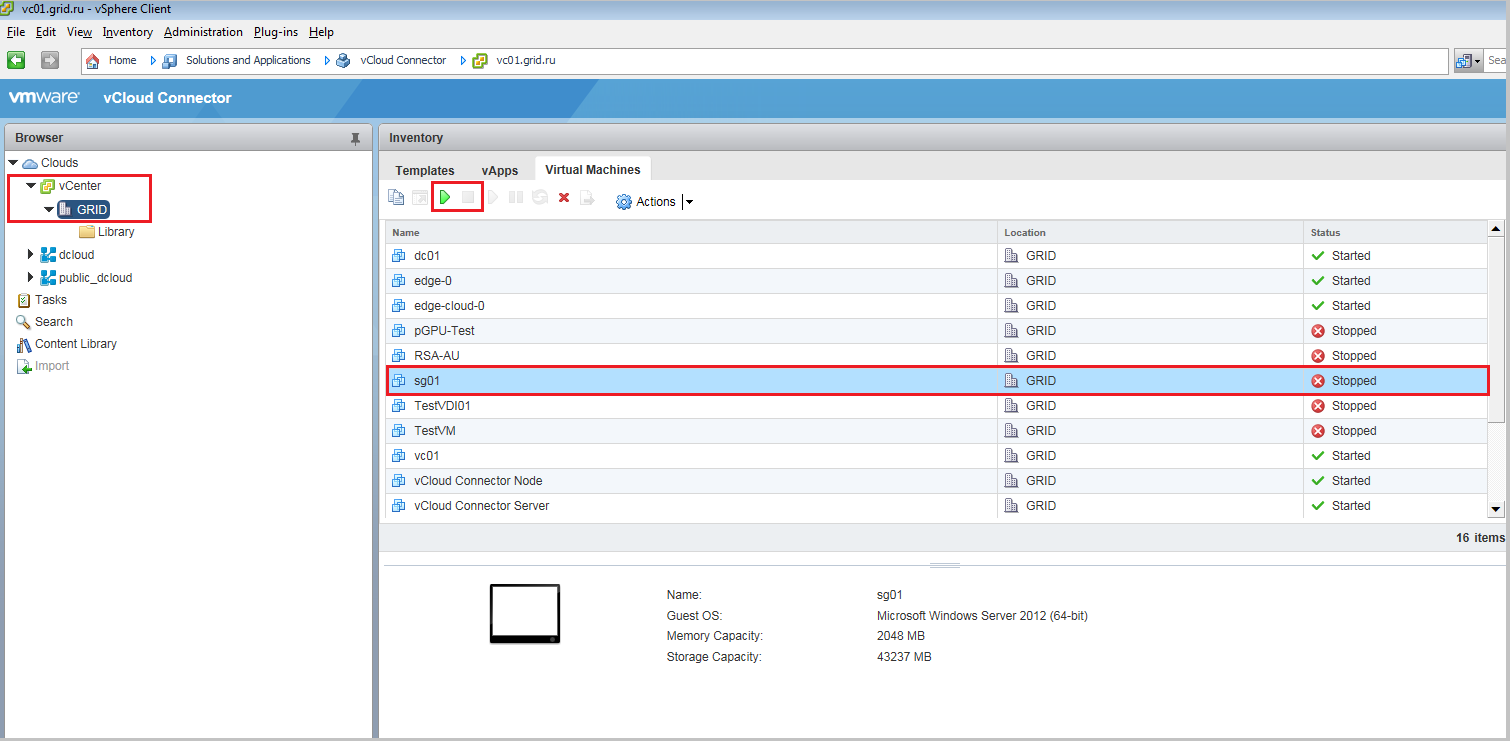
Access to the console. Before you begin, verify that the VMware Client Integration Plug-in is installed . Open the console itself in Internet Explorer.
In Internet Explorer settings, add the vCloud Connector Server address to compatibility mode and a list of trusted sites.
Select a virtual machine from the list. Click on the thumbnail below.
To open the console in full screen, press Win + ↑ on the keyboard.
To make the mouse active outside the console screen, press Ctrl + Alt.

Copying virtual machines. Copy the virtual machine from the vSphere infrastructure to vCloud Director. To do this, the virtual machine must be turned off.
Now let's do the opposite: copy vApp from vCloud Director to the vSphere infrastructure. In this scenario, only vApp can be copied.
Copying will help if you need to duplicate a separate virtual machine in a remote infrastructure. If such machines or templates have a whole catalog, then it is more convenient to use the directory synchronization function. You designate the main directory, from where the changes will be automatically translated to the remote infrastructure directory.
Set up directory synchronization between vCloud Director and the vSphere infrastructure. In this scenario, the directory in the vSphere infrastructure will be the main one.
Now let's try to synchronize our directory in vCloud Director with the directory in the vSphere infrastructure.
You can do the opposite: configure directory synchronization from the vSphere infrastructure with the vCloud Director directory. To do this, you need to repeat all the same actions, only the catalog from vCloud Director will act as the main directory.
That's all you wanted to talk about working with vCloud Connector. In the next post , we’ll talk about how to use the hybrid cloud to back up and replicate to the site of the cloud provider.
PS In a previous post, we wrote that vCloud Connector allows you to stretch VXLAN between two remote infrastructures. This feature is available if vSphere Distributed Switch no higher than version 5.1 is installed in the vSphere infrastructure . Our vSphere already has version 6.
Working with a hybrid cloud: VMware vCloud Connector, Part 1
Working with a hybrid cloud: replication and disaster recovery to a service provider cloud using Veeam Cloud Connect Replication
In the first part, we talked about how to deploy vCloud Connector - a tool for working with a hybrid cloud based on VMware. Today we will go over the main functionality of vCloud Connector. We show how to work with virtual machines located in different infrastructures (turning on, turning off, access to the console), move virtual machines between remote infrastructures and synchronize directories.

Virtual Machine Operations
On / off. Everything is simple here. Go to the vCloud Connector interface.
In the left menu, select the infrastructure. In the right pane, go to the Virtual Machines tab and select the desired virtual machine. We click on the Power On control panel if we want to turn on the machine, Power Off if we want to turn it off.

Access to the console. Before you begin, verify that the VMware Client Integration Plug-in is installed . Open the console itself in Internet Explorer.
In Internet Explorer settings, add the vCloud Connector Server address to compatibility mode and a list of trusted sites.
Select a virtual machine from the list. Click on the thumbnail below.
To open the console in full screen, press Win + ↑ on the keyboard.
To make the mouse active outside the console screen, press Ctrl + Alt.

Copying virtual machines. Copy the virtual machine from the vSphere infrastructure to vCloud Director. To do this, the virtual machine must be turned off.
- Select the virtual machine and click on the Copy icon.
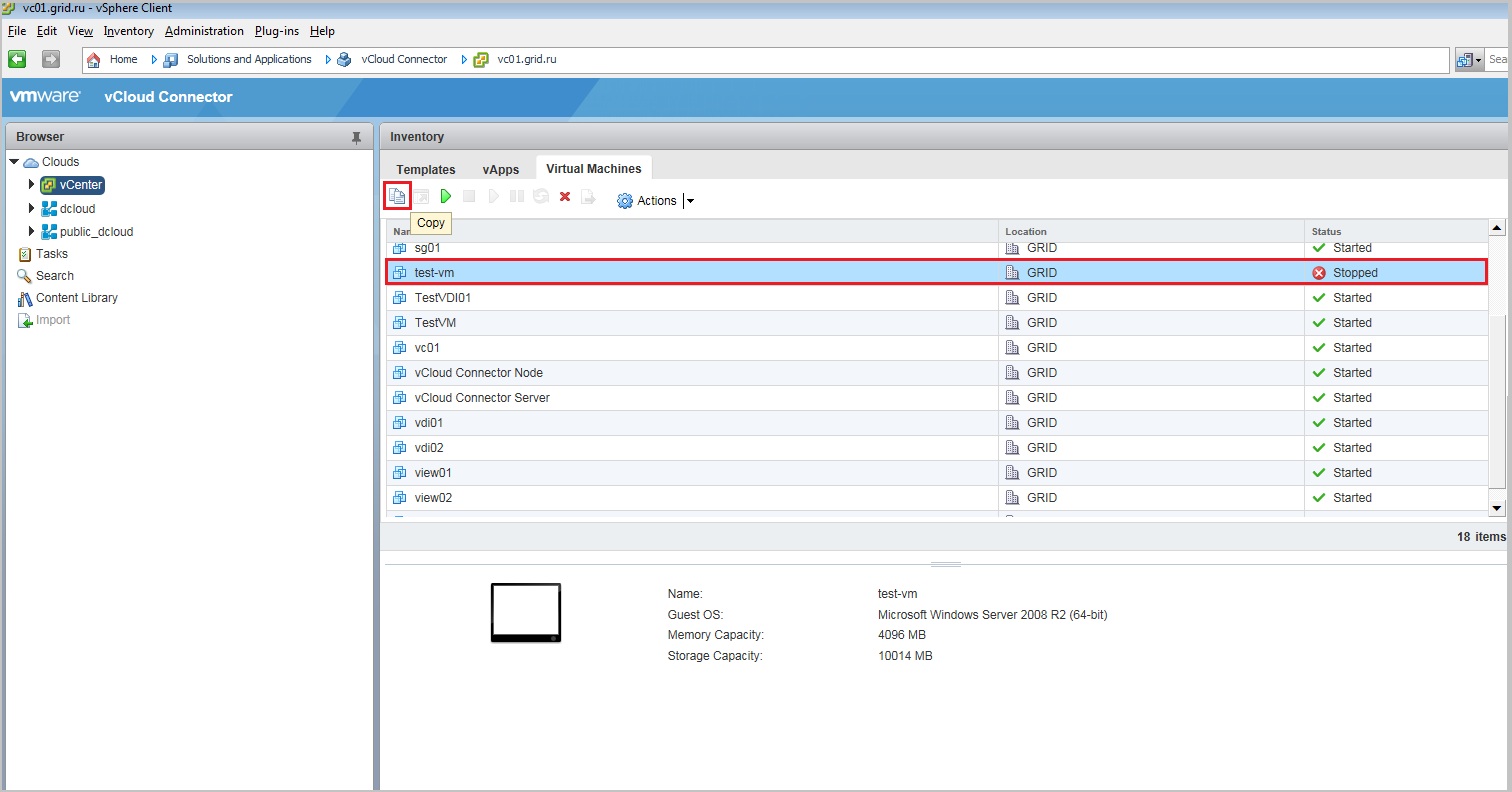
- Choose the infrastructure to copy the machine. Set the virtual machine name and description. We select the directory into which we copy our virtual machine. Click Next.
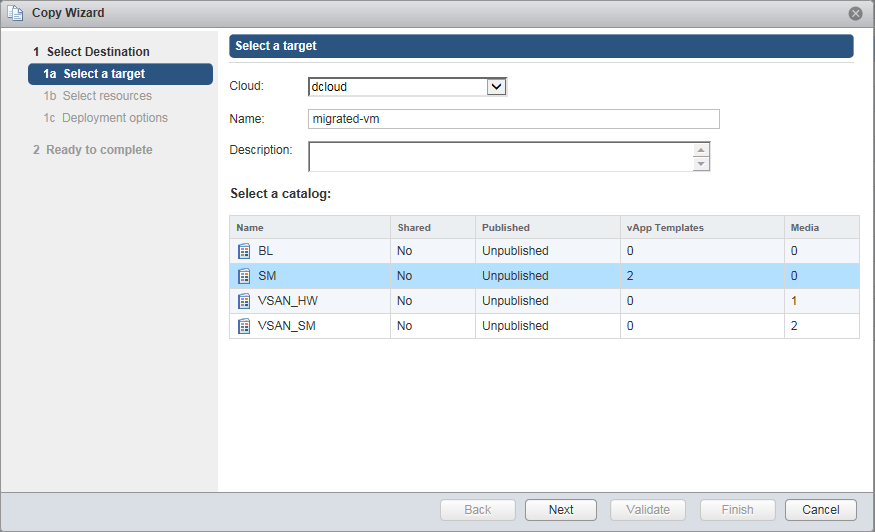
- Choose a virtual data center. Click Next.
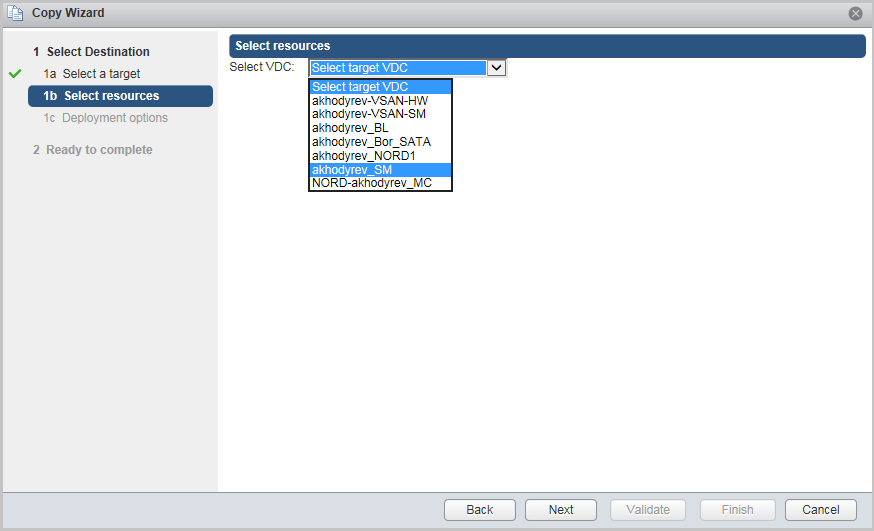
- Check Deploy vApp if you want the virtual machine to deploy to vCloud Director immediately after copying.

- In this case:
- select the network to which the virtual machine will be connected;
- set customization settings ;
- set the administrator password;
Immediately, you can make the virtual machine turn on after deployment (Power on vApp after deployment checkbox), and vApp itself is removed from the directory (Remove temporary vApp in destination vCloud catalog). Click Next.
- We check all the copy parameters and click Validate.

- After the successful validation process, click Finish.
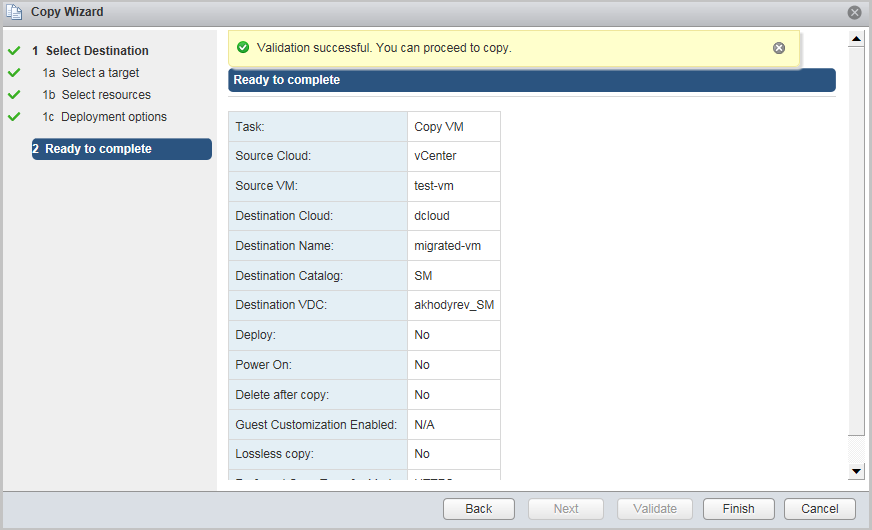
- The copying process will begin.
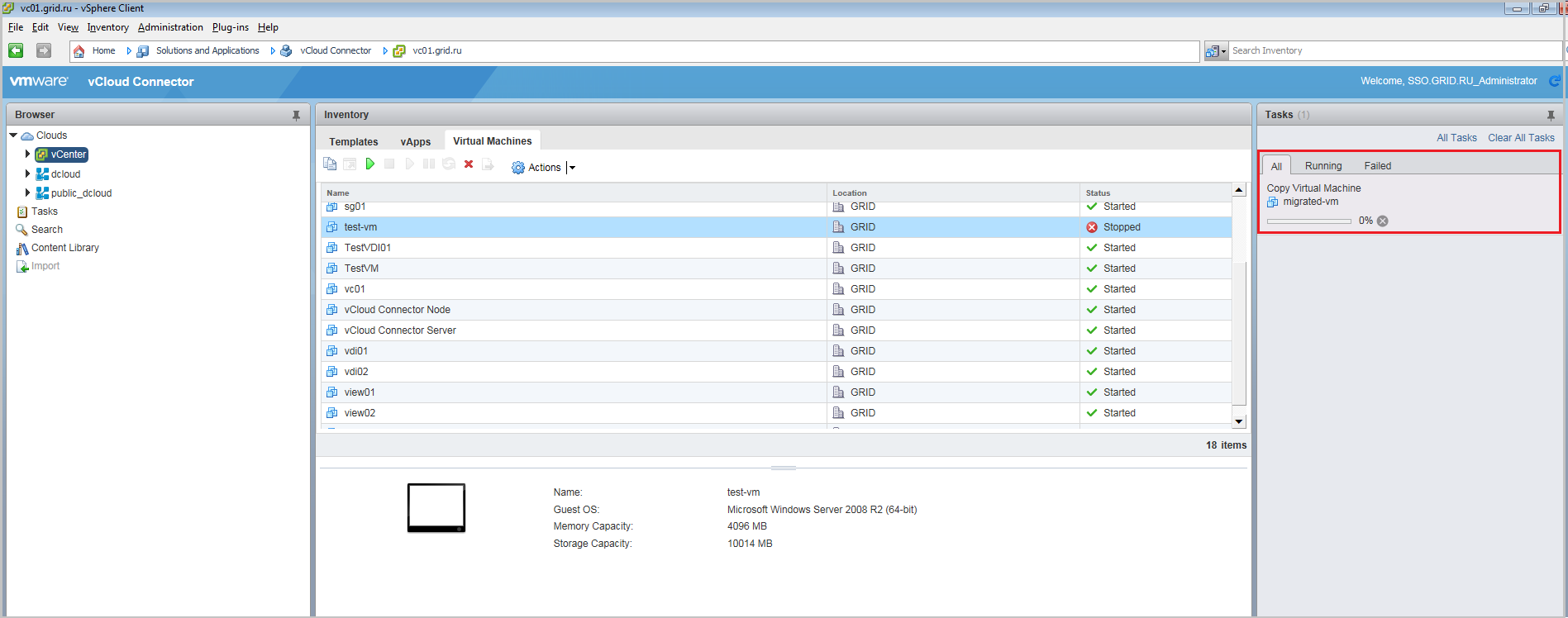
- After copying to vCloud, the virtual machine will be in its vApp in the vCloud Director directory.

- If we look in the same directory through the vCloud Connector interface, we will also see our vApp.
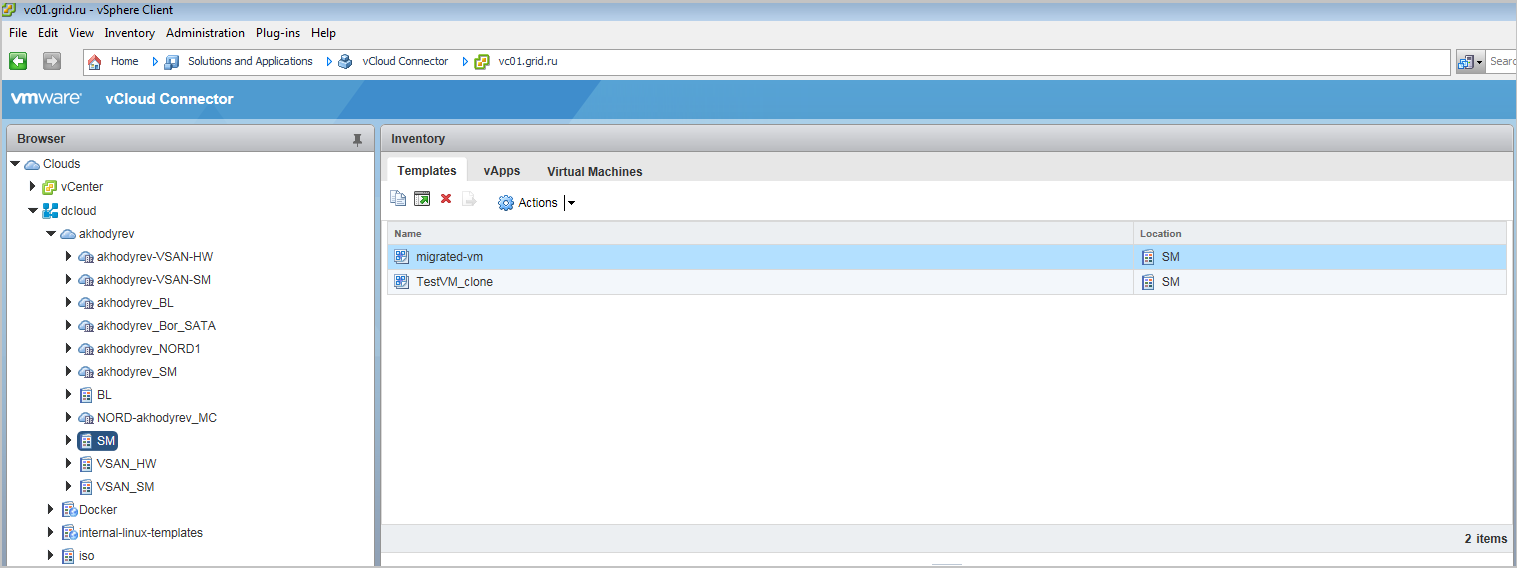
Now let's do the opposite: copy vApp from vCloud Director to the vSphere infrastructure. In this scenario, only vApp can be copied.
- In the vCloud Connector interface, select vApp from the vCloud Director infrastructure and click on the Copy icon.
- We select the infrastructure to which we will copy. Set a name. Click Next.

- Choose a cluster.
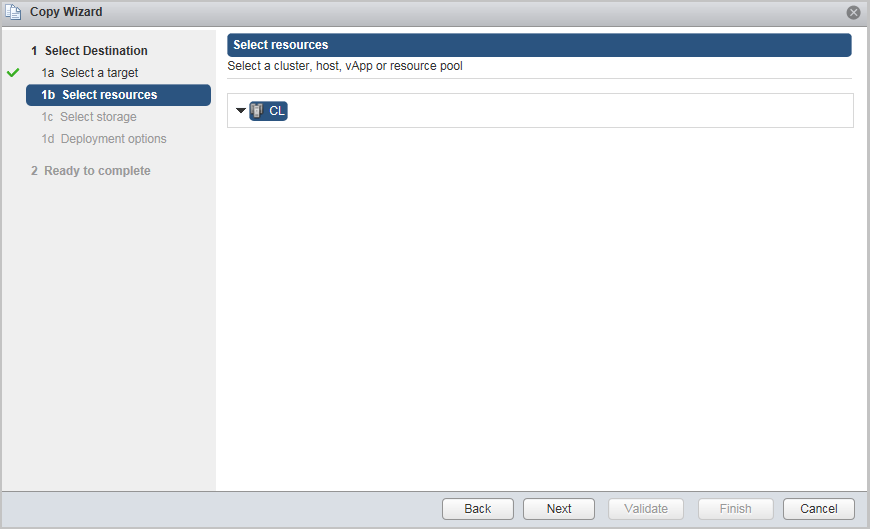
- Choose the storage where vApp will be deployed. Click Next
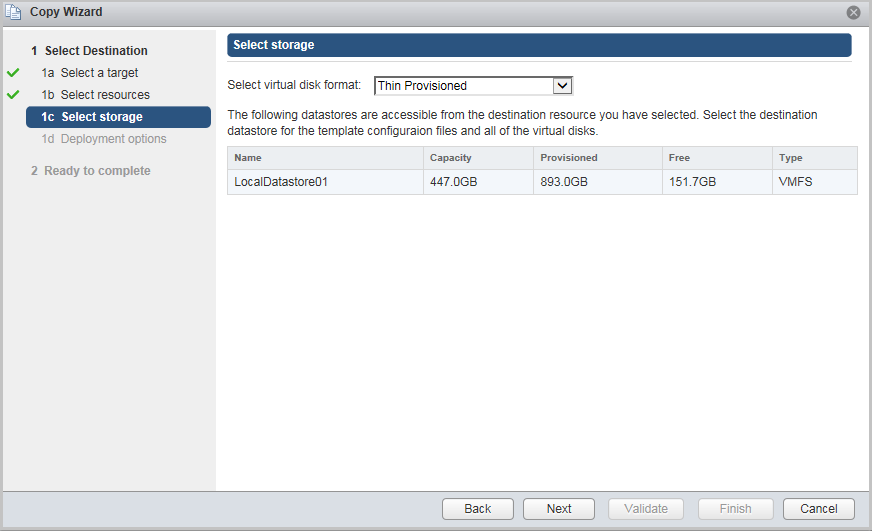
- Here you can also configure vApp to automatically turn on when copying is complete. Click Next.

- We check all the copy parameters and click Validate.
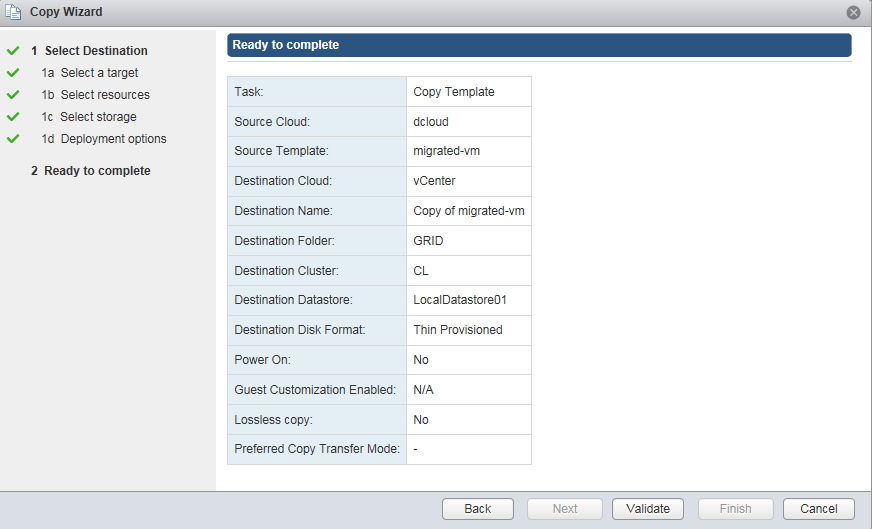
- After validation, click Finish.
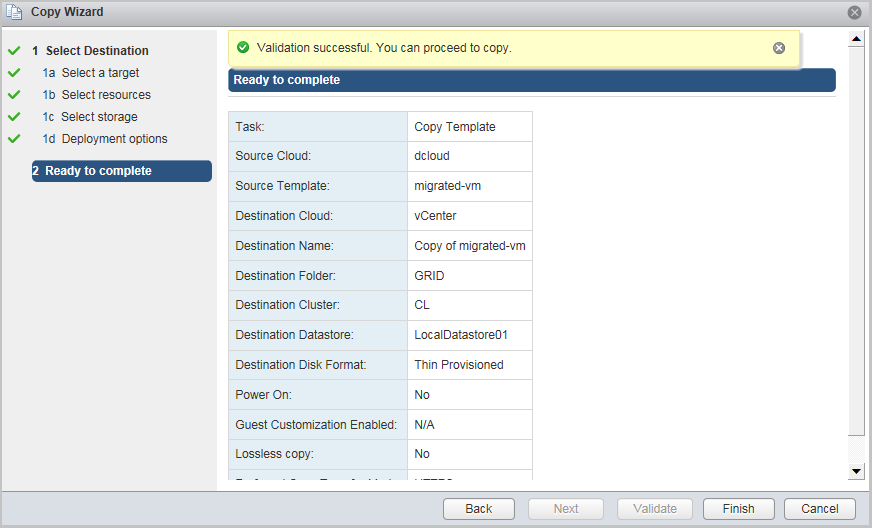
Directory Sync
Copying will help if you need to duplicate a separate virtual machine in a remote infrastructure. If such machines or templates have a whole catalog, then it is more convenient to use the directory synchronization function. You designate the main directory, from where the changes will be automatically translated to the remote infrastructure directory.
Set up directory synchronization between vCloud Director and the vSphere infrastructure. In this scenario, the directory in the vSphere infrastructure will be the main one.
- On the vSphere infrastructure side, create a folder whose contents will be synchronized with the directory in the vCloud Director infrastructure. Let's name the Library folder.
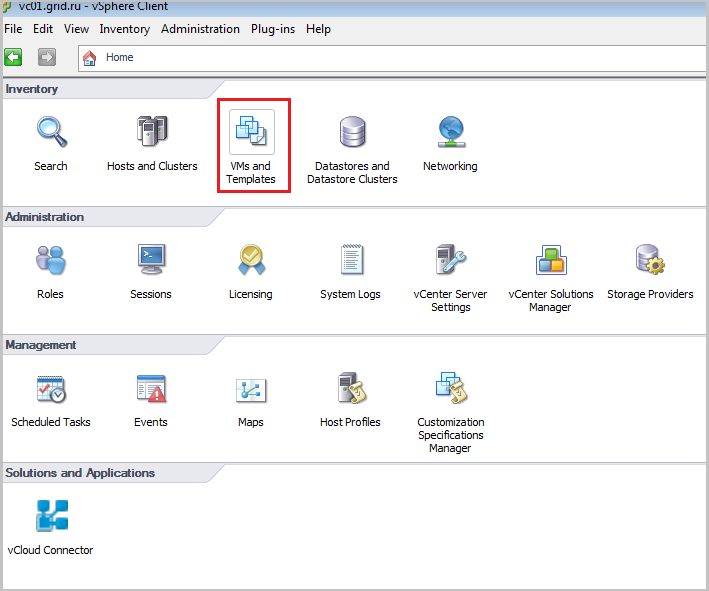
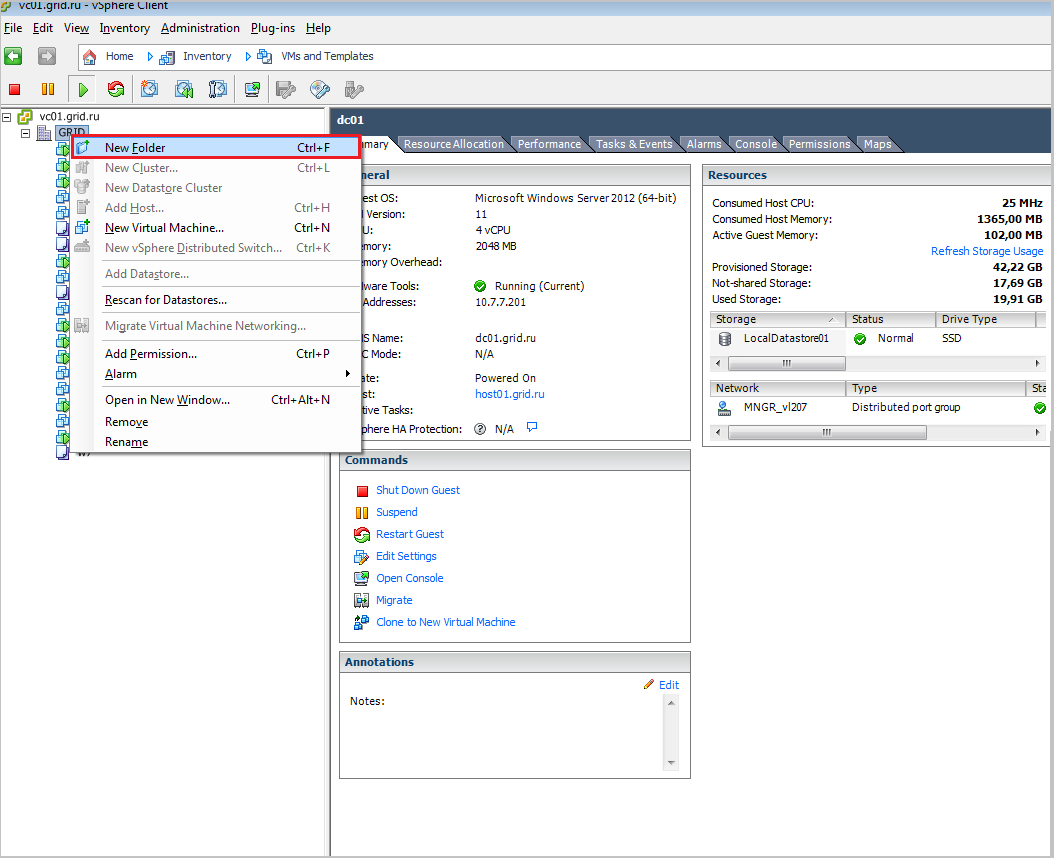
- In the created Library folder, we add the virtual machine templates that we want to duplicate in the vCloud Director directory. We put the test-vm virtual machine template there.

- Go to the vCloud Connector interface. Click Reload to display the created Library folder.

- In the left menu we find the Library folder.
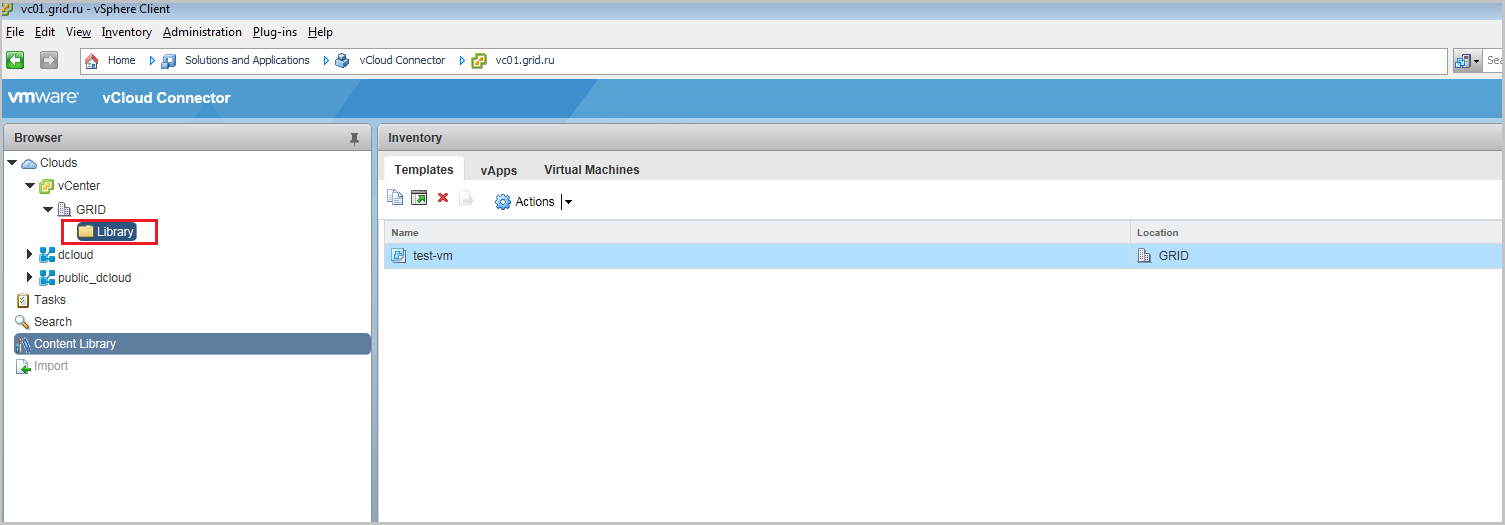
- We click on it with the right mouse button. Select the Publish to Content Library option.
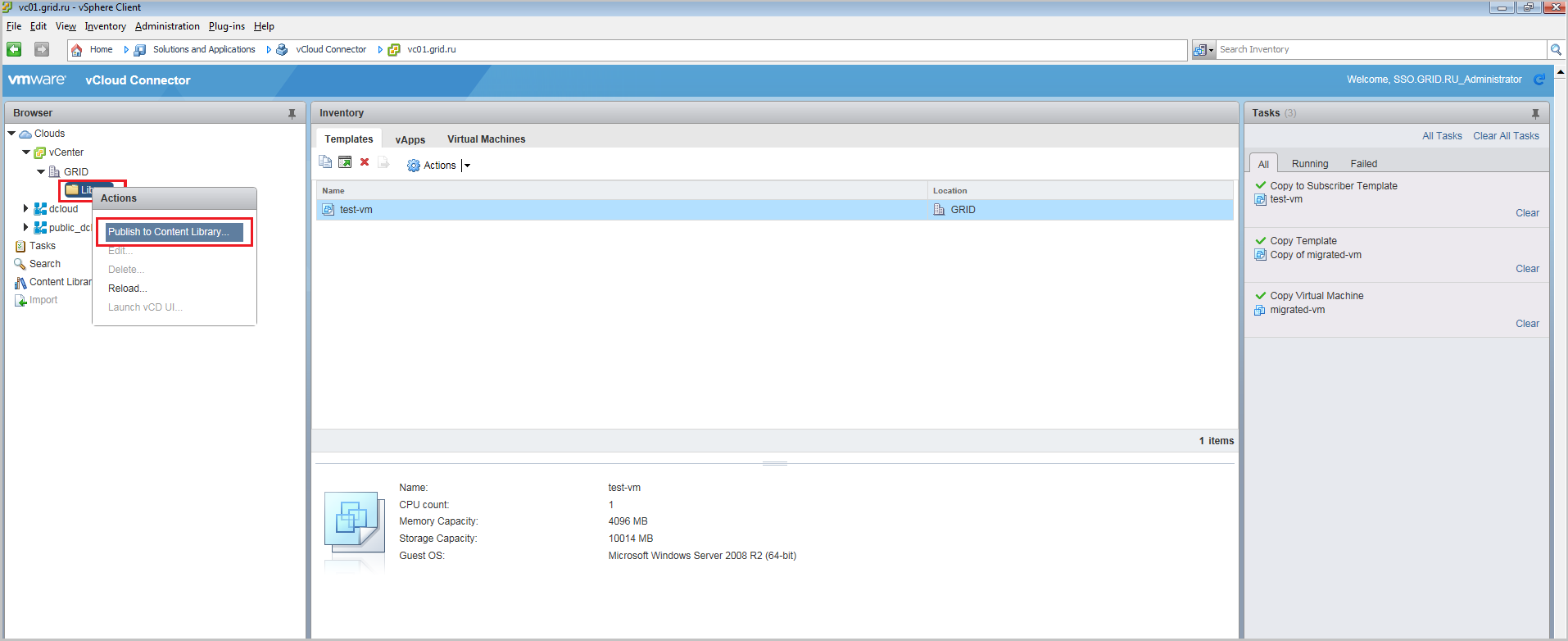
- Confirm the action.

- The Library folder appears in the Content Library section.
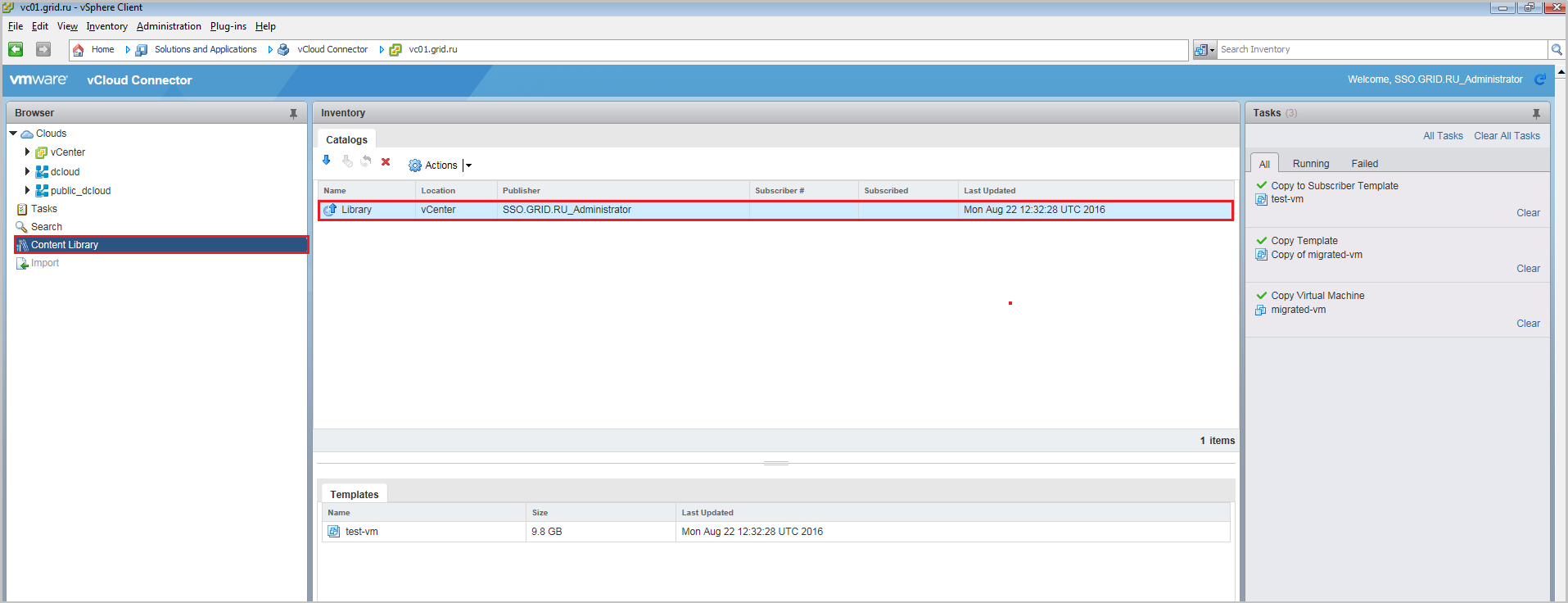
- Now create a new directory on the vCloud Director side. Call it vCenter_sync. This directory will be synchronized with the Library folder. You can find instructions on creating directories in vCloud Director here . Important: if you select an existing directory, its contents will be destroyed during the first synchronization.

- We return to the vCloud Connector interface. Go to the Content Library. Select the Library directory on the side of the vSphere infrastructure and click on Subscribe.

- In the window that appears, select the infrastructure and directory that will be synchronized with the Library directory. Activate Remove entities if deleted at publisher if you want the file to be deleted in the vCenter_sync directory when deleting files in the Library directory. Click Next .
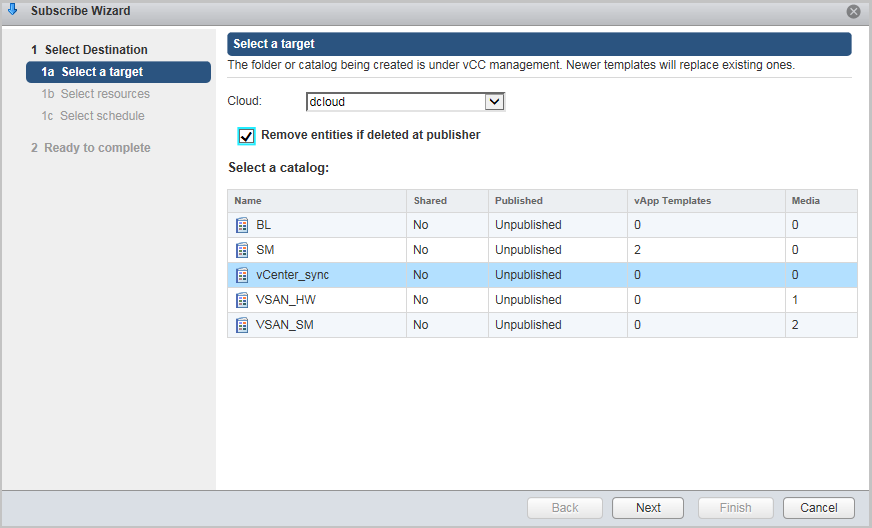
- Choose a virtual data center. Click Next .

- Choose a synchronization schedule.
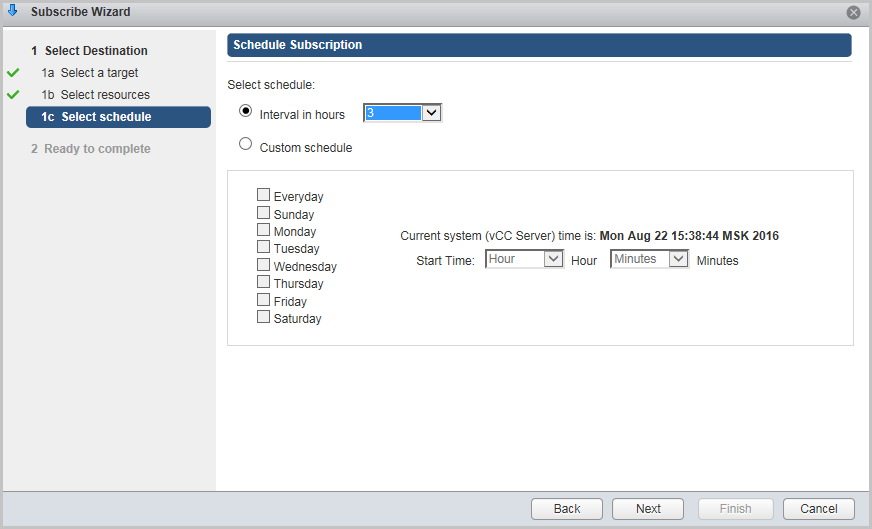
- We check all the synchronization parameters and click Finish .
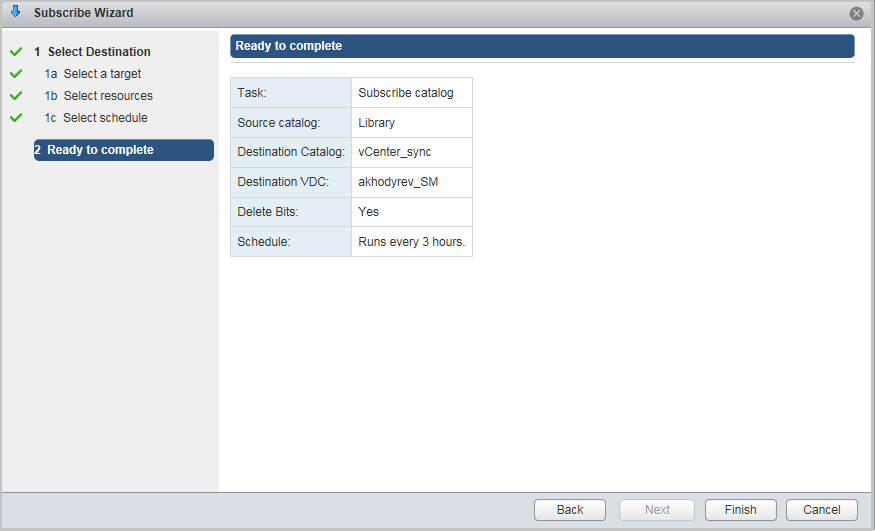
Now let's try to synchronize our directory in vCloud Director with the directory in the vSphere infrastructure.
- Go to the Content Library. Select the directory on the side of the vSphere infrastructure (Library) and click on Sync Now. We used manual synchronization so as not to wait for the specified three hours in the schedule.

- Confirm the synchronization. Click Sync Now.

- The test-vm virtual machine template from the Library folder will begin to be imported into the vCenter-sync directory on the vCloud Director side.
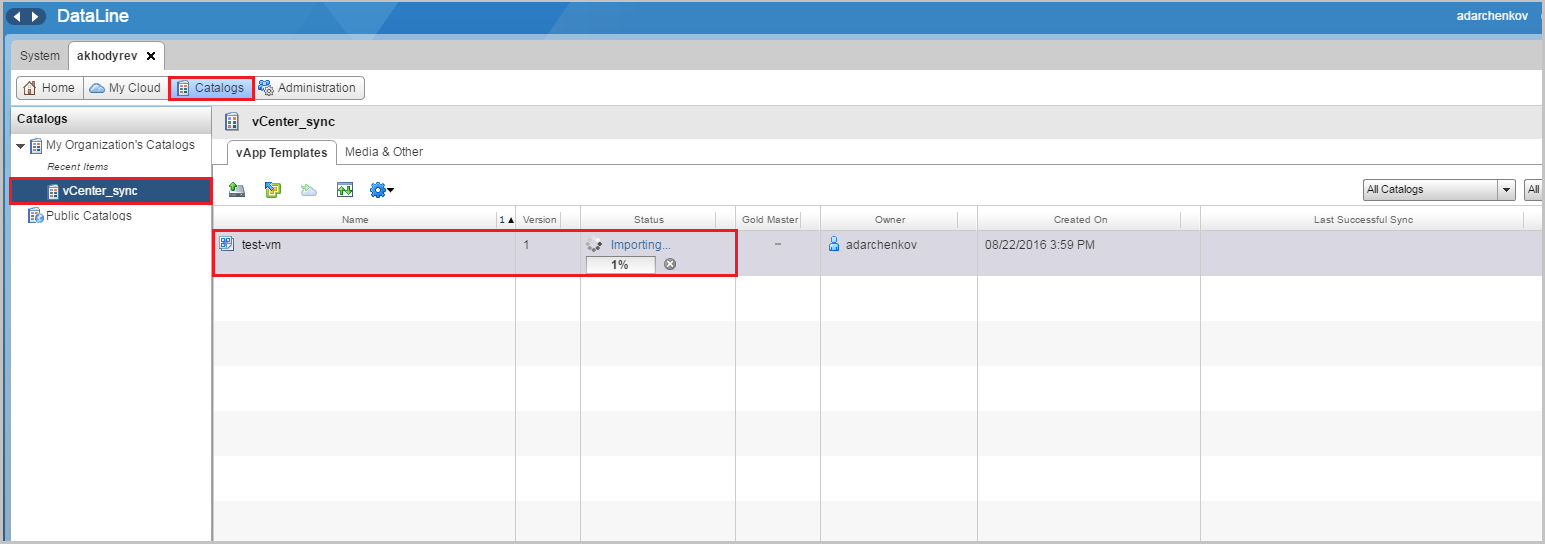
- After successful synchronization, the test-vm virtual machine will appear in the vCenter-sync directory on the vCloud Director side.

You can do the opposite: configure directory synchronization from the vSphere infrastructure with the vCloud Director directory. To do this, you need to repeat all the same actions, only the catalog from vCloud Director will act as the main directory.
- In the vCloud Connector interface, we find the necessary directory in the vCloud Director infrastructure in the left menu. We click on the directory with the right mouse button and select the Publish to Content Library option.

- Create a new directory on the vSphere infrastructure side (see above).
- We subscribe the vCloud Director directory to the directory from the vSphere infrastructure. To do this, select the directory and click on Subscribe.

- Next, set the synchronization settings, as we did before.
That's all you wanted to talk about working with vCloud Connector. In the next post , we’ll talk about how to use the hybrid cloud to back up and replicate to the site of the cloud provider.
PS In a previous post, we wrote that vCloud Connector allows you to stretch VXLAN between two remote infrastructures. This feature is available if vSphere Distributed Switch no higher than version 5.1 is installed in the vSphere infrastructure . Our vSphere already has version 6.
Working with a hybrid cloud: VMware vCloud Connector, Part 1
